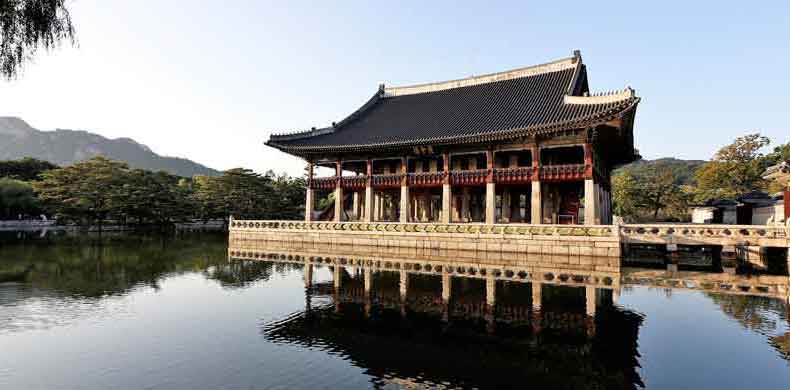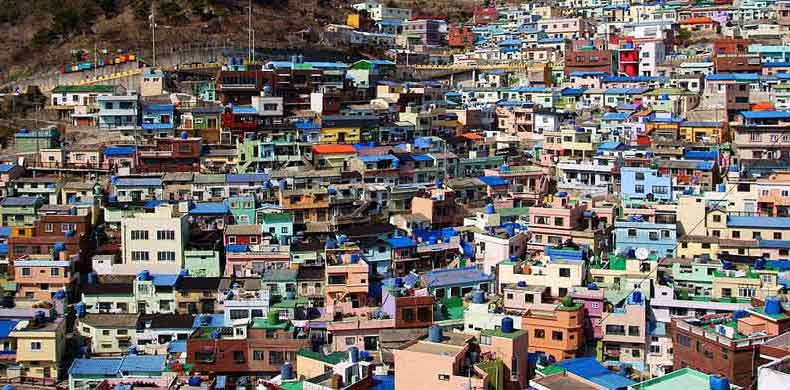



The capital of South Korea is one of the largest cities in the world, with no less than 25 million inhabitants, but it is above all a city of contrasts. In the city centre, the extreme modernity and hyperactivity of Asian cities coexist with the serenity of carefully renovated old buildings, and the most lively neighbourhoods are often only a few minutes walk from authentic places where tranquility makes you forget that you are in the heart of one of the most dynamic cities on the planet. A traditional village, known as Namsangol, has even been rebuilt a stone's throw from the city centre and the Myeongdong district. But contrasts are everywhere. In the alleys of Bukchon, the country's most talented craftsmen bring back to life traditions that were thought to have been lost in old houses (some of which have been transformed into guest rooms), while in the heart of Myeongdong, a true temple of fashion, the crowded alleys of fashionista remind us that Seoul has become a privileged shopping destination. Insadong's pedestrian walkways, where dozens of restaurants with tasty specialities are concentrated, contrast with the wide avenues of the modern districts on the south bank of the Han River. The most modern skyscrapers and symbols of economic power compete in elegance and coexist with palaces frozen in the days when the kings of Korea ruled their country. And the many trendy student districts, such as Hongdae, offer a wide range of nightlife options, from restaurants and bars to shops and nightclubs. It is the other face of Seoul, the trendy and relaxed one who refuses conformism. Huge markets, such as Dongdaemun (probably the world's largest fashion market) or the countless shops and amusement parks make Seoul a city that never sleeps, and where it is simply impossible to get bored, whatever your desires.
Download a free excerpt from the Petit Futé Guide
A unique cultural heritage :
South Korea's main tourist attraction is its concentration of exceptional historical and cultural sites. In Seoul and the surrounding area alone, there are several UNESCO World Heritage Palaces and Temples (ask for a passport for UNESCO sites, and the excellent accompanying brochure at the tourist office), and traces of Korea's rich history are visible throughout the country. Some cities, such as Suwon and its fortifications, Gyeongju with its royal tombs in the city centre, the charming Gongju or the surprising and underestimated Jeonju, are real open-air museums where fortresses, royal tombs and temples blend into the setting. But it is above all the sites built in the middle of nature that are worth a visit. The Bulguksa temple near Gyeongju or the Haeinsa temple near Daegu are real treasures. It is also in Haeinsa that the Tripitaka Koreana, a unique and above all complete collection of Buddhist texts engraved in the 11th century on nearly 7,000 wooden plates, is preserved. A marvel that is the pride of all Koreans, and it is easy to understand why. The temple, a jewel in an ocean of greenery, dates from the 9th century. Several Korean temples host visitors for short stays, offering an introduction to Korean Buddhism, and an unforgettable experience in beautiful settings.The Korean heritage is also its cuisine with its unique flavours. Lovers of spicy cuisine will be delighted, especially with kimchi, cabbage fermented with red pepper. But for others, the Korean barbecue or dishes like bibimbap, galbi tang and bulgogi are the must. Each region has its own specialities of which it is proud, and which it loves to share without limits. Not to be missed. Other facets of Korean culture, such as taekwondo, a national sport, traditional music or panori, singing with percussion, are omnipresent. The Korean alphabet, the Hangeul, was created under the authority of King Sejong the Great in 1443, and is universally recognized as an ingenious invention.Throughout the country, cultural festivals finally follow one another all year round, to the delight of young and old alike. Celebration of masks, fireworks, or traditional ceremonies: check the calendar of events before you leave and make your choice.


© Dominique Auzias & Jean-Paul Labourdette
| January | February | March | April | May | June | July | August | September | October | November | December | |
|---|---|---|---|---|---|---|---|---|---|---|---|---|
| Opinion |  |
 |
 |
 |
 |
 |
 |
 |
 |
 |
 |
 |
| Temperature | 2° | 5° | 11° | 18° | 23° | 27° | 29° | 30° | 26° | 20° | 12° | 5° |
| Rainy days | 3j  |
2j  |
4j  |
7j  |
4j  |
8j  |
18j  |
13j  |
7j  |
3j  |
5j  |
3j  |
| Hiking |  |
 |
 |
 |
 |
 |
 |
| 01 | 02 | 03 | 04 | 05 | 06 | 07 | 08 | 09 | 10 | 11 | 12 |
|---|---|---|---|---|---|---|---|---|---|---|---|
 |
 |
 |
 |
 |
 |
 |
 |
 |
 |
 |
 |
| 2° | 5° | 11° | 18° | 23° | 27° | 29° | 30° | 26° | 20° | 12° | 5° |
3j  |
2j  |
4j  |
7j  |
4j  |
8j  |
18j  |
13j  |
7j  |
3j  |
5j  |
3j  |
 |
 |
 |
 |
 |
 |
 |